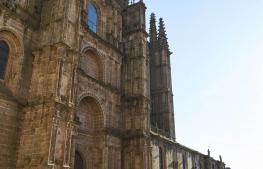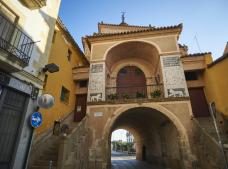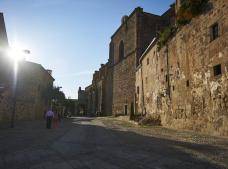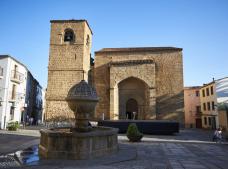Plasencia Historical Site
Monumental city
Plasencia is a city located in the north of the province of Cáceres. It benefits from a strategic location, the entryway to the counties of Ambroz, Jerte and La Vera, the commercial hub for an extensive area of northern Cáceres.
The River Jerte runs through the city, which was reconquered by Alfonso VIII at the end of the 12th century.
The layout of the area of the city inside the walls is organised around the rectangular, porticoed Plaza Mayor square. The main streets radiate from this point to the gates in the wall.
Other secondary streets connect to one another and a circuit runs around the city, parallel to the wall and through the area within the wall, forming a concentric layout typical of medieval cities. The historic centre is dominated by winding streets, with dead-end alleys and narrow corners.
The building development since the 16th century features a more regular layout, with the construction of palaces, churches and convents, as well as alterations to older buildings to provide more symmetry and order.
Squares are organised around the most important religious buildings, and the Renaissance contribution of bigger open spaces and greater visibility can be seen.
Palatial and religious buildings, squares and wall, among other architectural and urban elements, form an interesting historical and artistic whole.
The city’s most representative monuments include the cathedral, which is actually a curious fusion between two cathedrals: the Old Cathedral, begun in the 13th century, and the New Cathedral, from the 15th century. Important artists such as Juan de Álava, Rodrigo Gil and Gregorio Fernández all had a hand in its construction, with Fernández being responsible for its beautiful altarpiece.
Walking through the city, you can also see the Churches of San Martín and San Pedro, the Convents of Santa Clara and of Las Carmelitas Descalzas, the Bishop’s Palace and Jewish Quarter – part of the Spanish Network of Jewish Quarters – which are just some of the relics of the past that form Plasencia’s historic centre.
Plasencia was declared a Monumental Site in 1958.
Weather
Plasencia
21Apr

12 ºC
26 ºC
22Apr

11 ºC
24 ºC
23Apr

7 ºC
23 ºC
24Apr

11 ºC
25 ºC
25Apr

12 ºC
20 ºC
26Apr

10 ºC
23 ºC
If you like Plasencia Historical Site you will like this too...
Plasencia Cathedral
The building we see today is the result of the juxtaposition of two cathedrals, the old one and the new one.
Valencia de Alcántara Historical Site
Valencia de Alcántara is a town in the county of Sierra de San Pedro.
Cuacos de Yuste Historical Site
Back in 1959, the town of Cuacos de Yuste, in the county of La Vera, was declared an ‘Aesthetic Reserve’.
Monumental city of Cáceres
The topography plays an important role in the urban development of Cáceres, as the city stands on uneven ground, between the Sierra de la Mosca mou
More things you can find in Plasencia

Plasencia Cathedral
The building we see today is the result of the juxtaposition of two cathedrals, the old one and the new one.









